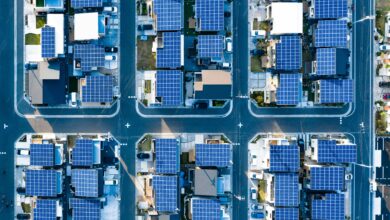Construction trends and innovations: It’s about efficiency

By: Bongani Miya, Executive: South Africa Operations at Barloworld Equipment
A wave of technology and process innovation is sweeping the construction industry. The options and pace of change can be overwhelming, so it’s important to stay focused on the goal of all innovation – to improve efficiency, productivity and safety, for the industry and society at large.
In navigating the range of new technology innovations in construction, it’s useful to understand not only which offers the most promise for your sector, or your business – but also how to apply these innovations, in the most effective way.
Innovation is a two-legged monster – it involves technology, and it involves application.
Data is power
One of the underlying innovation trends emerging in the construction industry is the acquisition of data from machines. For any business, data is power. The more you can understand about the performance of your business, the better your decisions will be.
As greater connectivity and the Internet of Things (IoT) powers the development of new technologies, the fields of data analytics, artificial intelligence and machine learning are evolving and enhancing our ability to interpret this data.
In the construction sector, data acquisition is helping to improve the ability of construction businesses to operate and monitor their assets remotely.
Safety and precision
Not only does greater connectivity and IoT allow for remote operation, it also drives greater precision. An operator can now know, down to a matter of millimetres, the position of their excavator bucket in relation to other infrastructure – pipes, cables etc. – as well as other machinery.
This level of machine guidance can be combined with AI and machine learning to drive efficiencies and to ensure the highest possible levels of safety.
Machine guidance also drives efficiency in that it now permits simultaneous operations that were previously impossible from a safety and process point of view. Where in the past, surveyors would need to be in attendance during every stage of road construction, remote digital guidance now minimise the need for on-site human intervention.
The cost of ownership
Another massive benefit for the construction sector lies in how technology can lower the long-term cost of machine ownership and improve productivity.
Having data available in real time enables everyone in the value chain to make timely decisions. Greater efficiencies in how information is consumed and how decisions are made then speed up the entire business process.
Making labour more effective
It’s a common concern that new technology will rob workers of their jobs. However, the reverse is often true. Remote machine operation, for instance, still requires an operator. This person is simply operating the machine off site, from an operator station that closely resembles a machine cabin. In this case, technology complements the skills of operators – it does not replace them but elevates the skills set from being a machine bound operator, impacted by elements to one empowered to interact with technology
Operational efficiencies
Another significant technology-driven efficiency lies in service and maintenance. A platform like CAT Connect allows power-generation customers to remotely monitor their generator sets, to confirm equipment health.
AI can also be used to provide more efficient predictive maintenance solutions, monitoring the intensity of equipment use, and scheduling service and maintenance accordingly. Parts can be ordered for just-in-time delivery and minimal disruption.
Full value from data
Also integral to the deployment and commissioning of new-technology products is being able to understand and use all the data that a fleet of machines is generating.
Tracking software such as Vision Link enables this. This cloud-based technology gives owners the location, operating hours, fuel and fluid levels, and overall utilisation level of their equipment, and then gives them the tools to maximise their uptime while delivering maximum productivity, manage projects and even geofence their machinery.
Condition monitoring services such as these allow customers to focus on the task at hand, rather than the health of their machine.
Equipment management
The ultimate value-add in terms of technology comes in the form of cradle-to-grave advisory and equipment-management solutions. Here, equipment providers become involved right from the selection phase, simulating how machinery will perform and modelling the life cost of owning the equipment.
During that life cycle, they consistently recommend fit-for-purpose maintenance solutions, monitor the asset and optimise its productivity. Finally, they also advise on how best to dispose of the asset at the end of its life.
Attitudes and perceptions
Tech evolution also comes with its own set of challenges. One of these is that the construction industry can sometimes become stuck in its ways. Deciding to drive your productivity through technology can be a difficult psychological adjustment to make for many business owners. Sometimes, processes and technology are easy to change, but people are less adaptable.
Another challenge is overcoming the perception that technology destroys jobs. In fact, technology is not about replacing people with machines. It’s about improving productivity from the resources available.
Sustainable business
Sustainability is fast becoming a non-negotiable for modern business. This can involve deploying renewable energy solutions, using battery power, or developing fuel-efficiency additives. But the most effective means of minimising carbon emissions is really energy efficiency. Most businesses should be able to move the needle on sustainability simply by using the right machine for the right job and using it effectively.
Key to this effective use is condition monitoring – also using technology. IoT, remote sensors and data analytics can tell a machine owner whether a machine is fit for purpose – and when an intervention is necessary to keep it running at its best.
Tech platforms can extract data to refine one of the ultimate determinants of value for a machine owner: How many units of work are being performed per unit of fuel used.
Extracting data
Numerous other technologies are being deployed in the construction sector – drones and unmanned aerial vehicles; digital twinning; virtual- and augmented-reality applications, etc. These have a similar goal of extracting data and interpreting it to optimise present or future performance.
Labour costs can become cheaper. Even technology gets cheaper. But time is always precious. Ultimately the goal of innovation must be to optimise how we use this precious resource, and how well will use the finite time we are granted!
Read More



